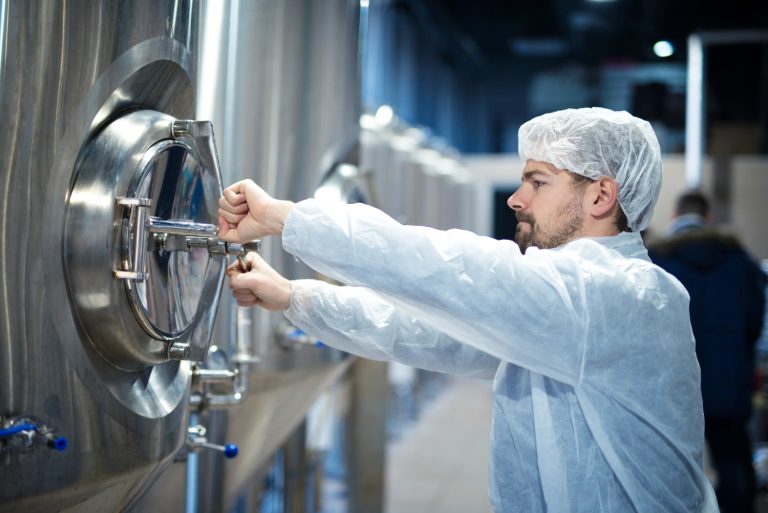What is a Tablet Press?
In today’s world, tablets are everywhere. From medicines to vitamins, many of the pills you see are made using a machine called a tablet press. But what exactly is a tablet press? Let’s dive into this fascinating topic to understand more.
The Basics of a Tablet Press
At its core, a tablet press is a machine that compresses powder into solid tablets. It’s a key tool in the pharmaceutical industry. Imagine you have a pile of powder, and you need to make it into a small, solid, easy-to-swallow tablet. That’s where the tablet press comes in.
How Does a Tablet Press Work?
A tablet press works by taking a specific amount of powder and pressing it into a solid shape. The machine uses a combination of pressure and precision to ensure that each tablet is the same size, shape, and weight. This consistency is vital, especially when making medicine.
Parts of a Tablet Press
Understanding the parts of a tablet press helps in grasping how it works. Here are the main components:
- Hopper: This is where the powder is stored before it’s pressed into tablets. The hopper feeds the powder into the machine.
- Die: The die is the part of the machine that shapes the tablet. It determines the size and shape of the final product.
- Punch: The punch is what applies pressure to the powder, pressing it into a tablet. There are usually two punches: an upper punch and a lower punch. Together, they compress the powder in the die.
- Cam Tracks: These guide the punches through the pressing process, ensuring that the right amount of pressure is applied.
- Ejection Mechanism: After the tablet is formed, the ejection mechanism pushes it out of the die, ready for packaging.
Types of Tablet Presses
There are different types of tablet presses, each with unique features. The two main types are:
- Single-Station Tablet Press: Also known as a single-punch press, this type of tablet press uses one set of punches. It’s simpler and used for small-scale production or research.
- Multi-Station Tablet Press: Also called a rotary tablet press, this machine uses multiple sets of punches, allowing for mass production. It’s faster and more efficient, making it the go-to choice for large-scale manufacturing.
Why is a Tablet Press Important?
A tablet press ensures that each tablet is uniform. This uniformity is crucial in the pharmaceutical industry because each tablet needs to contain the exact same amount of active ingredients. Without a tablet press, achieving this level of consistency would be impossible.
Common Uses of Tablet Presses
Tablet presses are used in various industries, not just pharmaceuticals. Here’s a look at some of their common uses:
- Pharmaceuticals: The most common use of a tablet press is in the production of medicine. Tablets are an easy way to deliver a precise dose of medication.
- Supplements: Vitamins and dietary supplements are often made using tablet presses. These machines can create tablets in various shapes and sizes, making them easy to swallow.
- Confectionery: Tablet presses are also used to make candies. You’ve probably eaten a candy that was made using one of these machines.
- Cleaning Products: Some cleaning products, like dishwasher tablets, are made using tablet presses. The press ensures that each tablet contains the right amount of cleaning agent.
Advantages of Using a Tablet Press
Using a tablet press comes with several advantages:
- Efficiency: Tablet presses can produce thousands of tablets per hour, making them incredibly efficient.
- Consistency: Each tablet made by a tablet press is identical in size, shape, and weight.
- Cost-Effective: By producing large quantities of tablets quickly, tablet presses help reduce manufacturing costs.
- Versatility: Tablet presses can create tablets of different sizes, shapes, and formulations.
Challenges in Tablet Pressing
While tablet presses are highly efficient, they’re not without challenges. Some of these include:
- Powder Sticking: Sometimes, the powder can stick to the punches, causing issues with the tablets’ shape.
- Weight Variation: Ensuring that each tablet has the same weight can be challenging, especially with powders that don’t flow well.
- Tablet Capping: This occurs when the top part of the tablet separates from the rest. It’s a common problem that needs to be addressed during the pressing process.
Innovations in Tablet Press Technology
As technology advances, so do tablet presses. Modern tablet presses are equipped with advanced features like:
- Automated Control Systems: These systems monitor the pressing process in real-time, ensuring that each tablet meets quality standards.
- Enhanced Speed: Newer tablet presses can produce tablets at an even faster rate without compromising quality.
- Improved Materials: The materials used in tablet presses are more durable, reducing the need for frequent maintenance.
Conclusion
A tablet press is a fascinating machine that plays a crucial role in various industries. From the medicine you take to the vitamins you swallow, many of the tablets you encounter daily are made using these powerful machines. They ensure consistency, efficiency, and quality in tablet production.
But that’s not all. Have you ever wondered how these machines are maintained or what the future holds for tablet press technology? The innovations are just as exciting as the machines themselves. Keep reading to discover more about the world of tablet presses and what lies ahead.

